Process
The quality process ability of our biopolymer compound resins is a special characteristic when compared to other bioplastics. Whether you are seeking high throughput in extrusion or ease of demoulding with injection molding: the ease of process ability is always one of our prime focuses when developing resins while maintaining the bio-character of the materials. We would be pleased to show you the various solutions that are possible with our biopolymer compound resins.
PROCESSES
Blown film extrusion
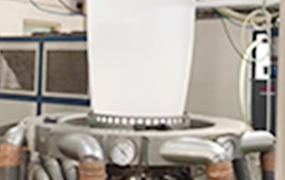
Blown film extrusion is the most common process for the production of continuous films that are used primarily for packaging. The first step in the process is to melt the plastic in the extruder, the molten polymer then enters an annular die head and is formed into a tube of plastic material. For multilayer films one extruder per material is required, their melt strands are combined in the die head to produce a tube of plastic with concentric layers.
After exiting the die the film tube, which is still in a plastic state, is pulled upwards by nip rollers. At the same time compressed air is blown into the film tube to achieve the desired film thickness and width. Chilled air is blown on the outside of the tube. Once cooled the film approaches the nip rollers and the bubble of film is gradually flattened into ‘lay-flat’ tubing. The nip rolls transport the film to the in-line slitters and roll winders at the base of the line.
For blown film extrusion, we offer certified biodegradable and home/ industrial compostable Bio-Flex® resins.
biobased and home compostable plastics
biobased and industrial compostable plastics
Injection moulding
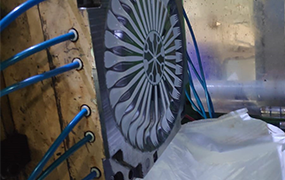
Injection moulding is a process for the sequential production of one or more three-dimensional thermoplastic parts. The plastic (possibly together with additives such as masterbatches) is transported from the hopper of an injection moulding machine by means of a rotating screw. The components are melted, homogenized and conveyed to a nozzle at the cylinder end where a melt cushion is built.
The nozzle is opened and the screw is pushed forward to inject the material into the mould. The injection pressure ensures that the cavity fills completely. The tool opens as soon as the plastic has reached sufficient stability to allow the part or parts to fall out or be removed. At the same time, the machine conveys more material down the screw ready for the next injection shot.
Our product portfolio includes a large number of injection moulding grades that are only biobased and biobased along with biodegradable or industrially compostable.
biobased and biodegradable plastics
biobased and industrial compostable plastics
biobased, non biodegradable plastics
Straw Extrusion
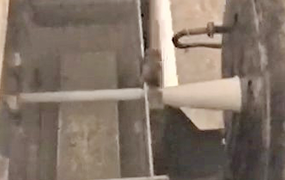
The resin pellets are poured in a hopper on one end of the machine and are forced through a long channel of extruder by a screw mechanism that is fitted with a die which produces a hollow tube shape. As the screw rotates, it moves the resin down the barrel. As the resin travels down the heated channel, it melts and becomes more fluid. By the time the resin reaches the end of the barrel, it is completely melted and can be easily forced out through the opening in the die.
The resin exits the die in a long string in the shape of a drinking straw. It is then moved along by a piece of equipment known as a puller which helps maintain the shape of the drinking straw. Eventually, this elongated tube is directed through a cooling stage—usually a water bath. The resin is stretched through the water bath by the puller. The water bath stops the heat conduction process and ensures that the drinking straw will maintain a specified consistency and diameter. Finally, the long tubes are cut to the proper length by a knife assembly. 4 Straws with special design requirements may undergo additional processing known as bending which have a series of loops and turns, may be bent into shape using special molding equipment. Another type of straw can bend in the middle and is made using a special device that creates a series of grooves that allow the straw to flex in U shape.
biobased and industrial compostable plastics
Sheet extrusion
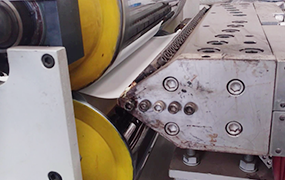
In the simplest form of sheet extrusion, plastic granules (possibly including additives) are fed from the extruder hopper along a heated cylinder by a rotating screw, melted & homogenized and conveyed to the sheet die. Depending on the application, there are a number of variations including the number and rotation of the screws, the screw and cylinder geometry and the structure.
The die itself can be fed by several extruders extruding different thermoplastics, (for example recycled materials) resulting in layered or concentric co-extrudates. The extrudate is then cooled via chill rolls and transported to slitting and winding stations. Thermoforming can also take place in-line.
For the production of sheet products, our product portfolio includes a variety of biobased, biodegradable as well as industrially compostable solutions.
biobased and biodegradable plastics
biobased and industrial compostable plastics
biobased, non biodegradable plastics
Thermoformingn
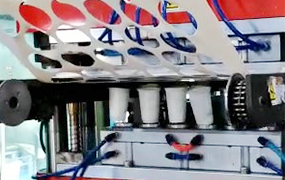
Thermoforming, also referred to as vacuum forming or deep drawing, is a highly economical process for manufacturing products such as trays, blister packs and cup lids in large quantities. In all cases, a flat plastic film or sheet is first heated and then pressurized air is applied or the sheet is shaped under vacuum to the contours of a forming tool.
Three-dimensional moulded parts are created as a result, primarily for the packaging sector, but also for the toy, consumer goods and automotive industries as well as for many other sectors.
We meet the demand for biobased grades with Bio-Flex® PLA blends, a partially biobased PET and a biobased Terralene Green PE compound.
biobased and biodegradable plastics
biobased and industrial compostable plastics
biobased, non biodegradable plastics
Extrusion coating
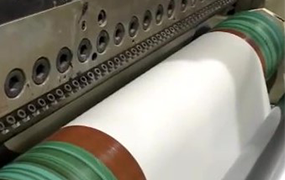
Extrusion coating is an industrial process that enables to produce a melt of thermoplastic polymer material. When this poly melt is coated as a thin layer onto a moving substrate like paper/ paper board as a functional coating, the process is known as “Extrusion Coating” The plastic which is to be applied as a coating, is first melted in an extruder and then applied by a horizontal slot die to the moving carrier web which may have been previously treated online with Corona/ plasma treatment for better adhesion of molten plastic with web.
The resulting composite then passes through a combination of chill rolls and press rolls to optimize surface and adhesion before being wound up at rewinder in roll form on core pipe. This compostable coating on Paper/ paperboard packaging materials are very promising systems for the present/ future improvement of food & beverage serving/ packaging from environmental aspects. Compostable PLA compound lining has potential environmental advantages over conventional PE lining on paper/ paper board being true compostable laminate. Typical applications include beverage paper cups and flexible packaging.
Our versatile portfolio for extrusion coating has a biobased and Industrially compostable Bio-Flex® resins and a tailor-made Biobased Terralene® compound.
biobased and industrial compostable plastics
biobased non biodegradable plastics
Net Extrusion
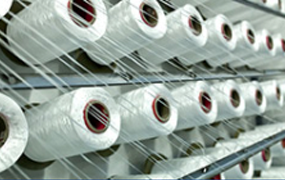
For the production of netting from thermoplastics, the material is first melted in the extruder and subsequently extruded through counter-rotating nozzles which have holes on the circumference. The extruded melt strands from the inner and outer holes fuse to each other at the points where they cross. This way an endless netting tube is made which is then cooled, folded flat, cut at the edges (if required) and wound up.
For net extrusion, our portfolio offers biobased and industrially compostable Bio-Flex® resins.
biobased and industrial compostable plastics
Extrusion blow moulding
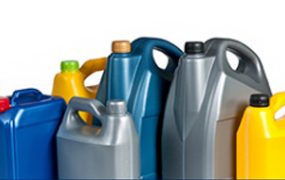
Extrusion blow moulding is commonly used to produce hollow parts such as bottles, canisters or irregularly shaped containers. The thermoplastic material is first melted in an extruder, the melt is then conveyed through an annular die and formed into a hollow tube or parison. In the second step, a two-part mould closes around the parison, creating the typical pinch-off weld on the bottom.
A mandrel is inserted into the upper end of the parison and compressed air is applied so that the preform is pushed to the tool wall. At the same time, the neck region of the hollow part is formed. The part can be removed as soon as it has reached a sufficient strength.
We offer customized Terralene® Green PE compounds and a tailor-made biodegradable and industrially compostable Bio-Flex® resins.
biobased and industrial compostable plastics
biobased, non biodegradable plastics
Lamination
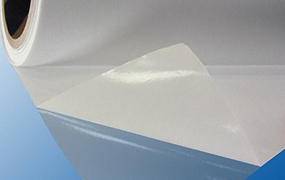
Lamination is a continuous process in which a plastic film from a roll is bonded to a substrate such as paper, paperboard or aluminum foil using adhesive system. To ensure good adhesion, the process is carried out at elevated temperatures and pressures, both of which are applied via heated rollers in dry/ wet adhesive lamination process which could be aqueous/ solvent based/ solvent-less. Plastic film functionally provides sealability & flexibility to the laminate. For the production of films suitable for laminating, we offer various biobased and industrially compostable Bio-Flex® resins.
biobased and industrial compostable plastics
3D Printing

3D printing is an additive manufacturing process that allows components to be made without molds by printing with molten plastic materials.
Filaments of plastic are melted in an extruder and the melt strands are then deposited using computer control.
In subsequent printing cycles, further layers are applied on the first layer and they fuse permanently together. The three-dimensional, resilient part thus grows step by step until it is completed. Compared to injection molding, complex shapes and undercuts can be easily produced. However, 3D printing is significantly more time-consuming and therefore usually economical only for prototypes or small batches of components.
Our biobased 3D filaments range includes Bio-Flex® PLA blends and natural fiber reinforced Fibrolon® 3D biodegradable grades that combine high dimensional stability and flexibility with excellent flow properties, enabling the production of components with minimal shrinkage and no warping.
biobased and biodegradable plastics
biobased and industrial compostable plastics
Injection blow moulding
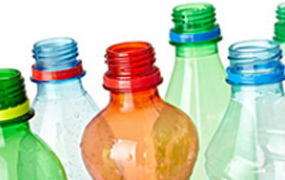
Injection blow moulding is a multi-stage process that produces predominantly rotationally symmetric, seamless hollow bodies (for example beverage bottles) in large numbers, without waste and with a high surface quality. In the first phase, the injection moulding of ‘test tube’-like preforms takes place, usually complete with the finished shaped thread for the closure cap.
These are then conveyed, while still in the thermoplastic state, directly into the blowing station on a classic blow moulding machine and then inflated by compressed air until the final container shape is reached. Alternatively, the inflation of the small preforms, which occupy less space when transported, can also be done at the bottler. We have partially biobased PET for injection blow molding in its portfolio, which is characterized by high transparency and can be processed and recycled like conventional PET.